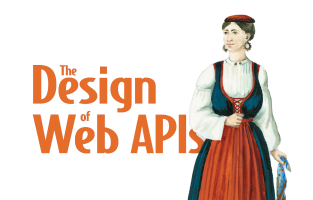OpenAPI Specification Reference Series - Part 1
What is the openapi property?
By Arnaud Lauret, July 6, 2022
No OpenAPI document without the openapi property, but what does it represent? How did it evolve across the OpenAPI Specification versions? And how to take advantage of it? This is the first post in the OpenAPI Specification Reference series.
OpenAPI Specification Reference Series
This series aims to provide complete cross-version reference documentation about the OpenAPI Specification aggregating different sources of information. For each analyzed element, you’ll find its definition, how it evolved across the different versions of the specification, how it is used and misused and where to find more information about it. This structure may evolve with future posts.
This series’ posts are not intended to be actionable tutorials, they may be of interest to people involved in the evolution of the specification or creating tools, and also advanced OpenAPI users. Most of this content will probably be incorporated in the next version of the OpenAPI Map and be useful for more actionable series/posts about OpenAPI and Spectral.
- 1 - What is the openapi property?
- 2 - What is the info property in OpenAPI?
Definition
What represents the openapi property, is it required, and where it is located.
The openapi property (line 1 in the document above) specifies the version of the OpenAPI Specification used in the document. It does not participate in the description of an API itself; it could be considered the only “OpenAPI metadata” in an OpenAPI document.
The version of the OpenAPI Specification takes advantage of semantic versioning major.minor.patch, 3.1.0 , for instance. Therefore, the openapi property is a string (not a number). Note that some minor non-backward compatible modifications could happen (see Changelog).
The openapi property is required; an OpenAPI document will be considered invalid without it.
The openapi property is defined in the OpenAPI object and located at the document’s root. It appears only once in a document.
Changelog
How the openapi property evolved across the different versions of the specification.
Version 2.0
In version 2.0 and earlier, the specification’s version was stored in a swagger property (at the same location) because that was the name of the specification at that time (read What is the OpenAPI Specification? to learn more about this).
Version 3.0
The new “OpenAPI Specification” name was introduced in the 3.0 version, hence the modification of the property’s name specifying the version of the specification to openapi.
Version 3.1
While version 3.1 did not bring any structural change regarding the openapi property; it modified the interpretation of its value. Strict semantic versioning was used in version 3.0: a modification of the minor version (3.0.0 to 3.1.0, for instance) must be backward compatible. Version 3.1 introduces a “loose semantic versioning” where non-backward compatible minor version changes (3.1.0 to 3.2.0, for example) may be introduced if the impact is considered sufficiently low compared to the benefits.
Usage
How the openapi property can be used and misused.
Use case examples
While the openapi property has no use inside a document, it is pretty helpful for the tools and processes that take advantage of the OpenAPI Specification. By the way, if you plan to create a format (for whatever VALID reasons), I would highly recommend putting the version inside documents.
OpenAPI Parsers
- Check you’re reading an OpenAPI document: if the property is absent, the document may not be an OpenAPI one.
- Choose an adapted parser or JSON Schema based on the name of the property (swagger, openapi) and its value (2.0, 3.0.X, 3.1.X).
API Tools
- Check the document is compatible with the tools you’re using (version 3.1 is not supported in all tools yet at the moment this is written).
- Check the tools you plan to use are compatible with your existing documents.
- Raise warnings or errors when linting documents to enforce moving from Swagger 2.0 to OpenAPI 3 to stop using outdated and with-less-features tools.
API Governance
- Raise warnings or errors when linting documents to enforce moving from Swagger 2.0 to OpenAPI 3 to allow describing and documenting APIs more precisely.
- Apply linting rules only on specific version(s) of the specification
Troubleshooting
The usual problems encountered with the openapi property.
Not the version of the API
When starting to use the OpenAPI Specification, the property and its value can be confounded with the version of the API described in the document (which is specified in info.version). Hopefully, most of the time, parsers will raise an error, but not straightforward like “did you try to put the API’s version in the openapi property instead of info.version?
Almost semantic versioning
Be cautious with version 3.1 (and above) when working on OpenAPI-based tools because it introduces a “loose semantic versioning” where a minor version change may not be backward compatible (see Changelog). Version 3.1 introduces a few non-backward-compatible-but-with-limited-impact changes, mainly around schema definitions.
Missing quotes
This is a concern only in version 2.0. It is recommended put quotes around the value in YAML because 2.0 would be interpreted as a number instead of a string.
Documentation
Where to find more information about the openapi property.
Official documentation
- Version 3.1
- Version 3.0
- Version 2.0
API Handyman resources
- All examples shown in this post can be found in my openapi-samples Github repository.



